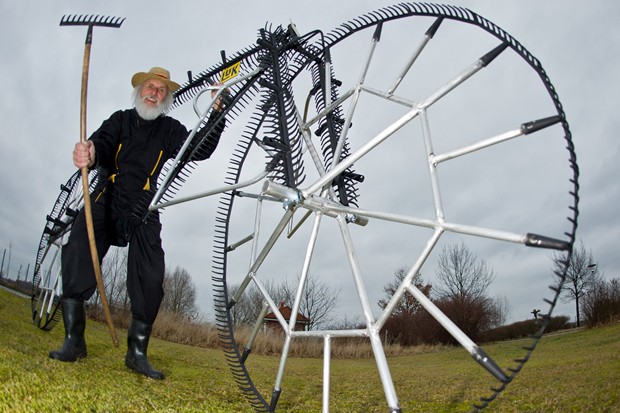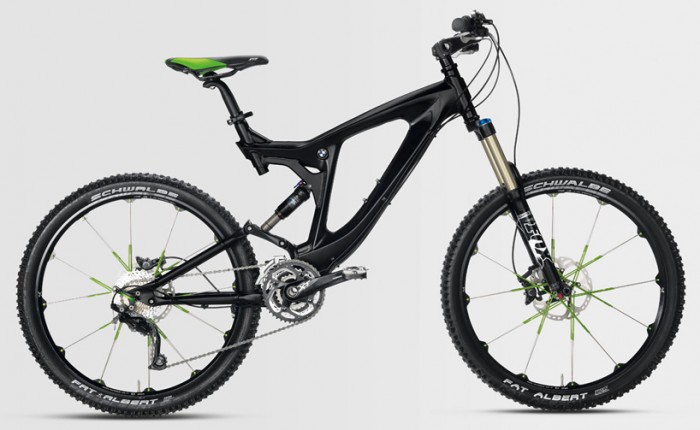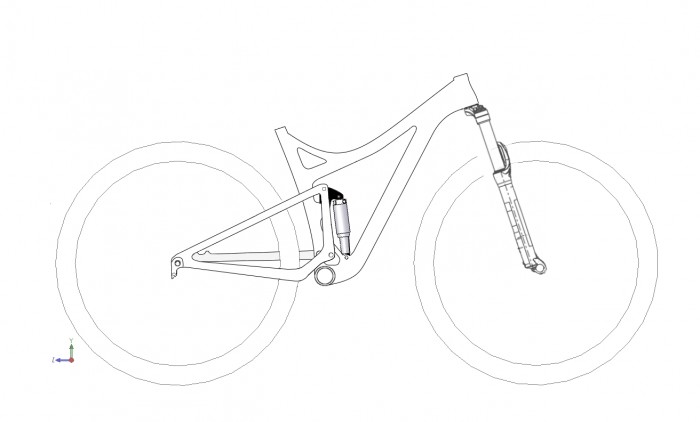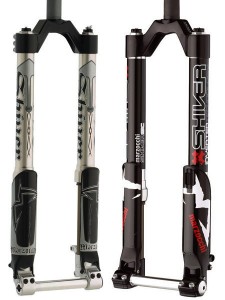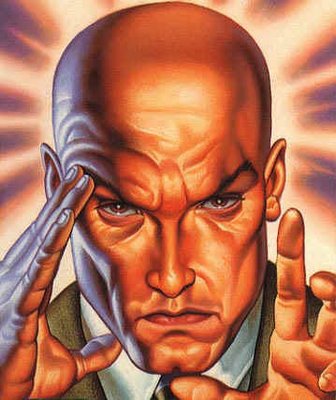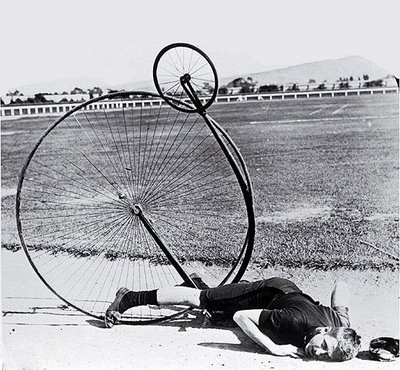So it looks like I’ll be living in Portland before the end of April. While a fresh start in the Pacific Northwest won’t do much to help cure my coffee addiction, it should do wonders for everything else. There’s a strong sense that Portland is where my family was supposed to’ve been living all along, and finally venturing off of our mostly abandoned Appalachian mountain top is going to feel pretty good.
Still, there’s a lot to miss about this place. The view off my back porch, for one thing.

Notice the conspicuous lack of civilization? Plenty of stars visible at night, and a whole lot of singletrack. On some quiet farm roads around my home, I’ve ridden ten mile stretches without seeing a single car. Granted the ones you do see tend to be doing 85mph in a 30mph zone with at least one rebel flag visible from every angle, but still, the riding is pretty spectacular.
And yet it’s the people here that I’ll miss the most. When you start a business in a small town, you meet a lot of really memorable people. Extremely memorable. Sometimes, you kind of wish that they weren’t so memorable. Occasionally, you hold your head in your hands and say things like, “Jesus Christ!” over and over again because the people all around you are just so fucking memorable that it’s almost like you can’t forget them no matter what you do. Still, you come to love them, all of them, the way Jeffrey Dahmer’s parents sort of had to love him.
When I first opened Speedgoat fifteen years ago in an old one-room school house here in Laughlintown, PA, the first person to walk in the door was a sour-faced girl from just up the street who asked, “So what is this supposed to be, a bike shop or something?” Over the years, we came to regard her as “just that way,” which is a kind of coping mechanism for dealing with assholes when you’re trapped in a small town. She’d grunt a greeting if you passed her on the street, and there was a genuine sense that life for her was every bit as awkward as she made it for everyone else, so that you learned not only to tolerate her disdain for you, but to rely on it. Making her uncomfortable at having to acknowledge your existence was a kind of ritual, like reading the paper with a cup of coffee, and you eventually learned to look forward to it.
I will also never forget Rich, a local guy who still lived with his parents about a half mile away. Unlike most of the people in the neighborhood, Rich was not merely remarkable for Laughlintown. Rich would be remarkable regardless of where you put him. Tending to sled dogs in Alaska (which he did) Rich would have been considered remarkable. At a Slayer concert in Copenhagen, Rich would have been considered unique. In fact, when I try to imagine a scenario in which Rich seems even slightly less remarkable–even remotely at home–I’m left imagining as a character in a yet unmade Will Ferrell movie about guys who try to open a meth lab in a suburban mall. There are also a handful of scenes from Cheech and Chong movies where he wouldn’t necessarily seem out of place, though you still wouldn’t be able to take your eyes off the guy.
Rich frequently reeked of urine. There’s not really any other way to write that, and there wasn’t really any other way to deal with it, either. He came in my shop–lived in my shop, honestly–wearing tattered daisy dukes, one of four concert shirts, and always a headband of some sort, and he smelled like piss. He was a genuinely sweet guy who probably wouldn’t hurt anybody, but the smell thing was unpleasant.
He became a fixture at my shop in the early days. So much so that once I accidentally locked him in the building at night while I was in the back building a bike (eventually he had to interrupt a disc brake installation and ask to be released because he was late for dinner and his mom would be mad).
For a while I worried that customers thought he worked there, but eventually I didn’t care. More than once, I looked up to see Rich carrying on a conversation with someone who’d arrived to pick up a bike valued at three or four thousand dollars. Such is the powerful joy of buying a new bike that a man could step out of a new Range Rover, accompanied by some variation of the perfect wife and often angelic children and/or a golden retriever recognizable from television commercials, enter my store to pick up a new bike, and within minutes be deeply engaged in a meaningful discussion with a guy who’d pissed the same shorts he was still wearing earlier that morning.
I should point out that Rich rode bikes. A lot, and strangely. He’s one of the few people I know who really have been stopped by the police for riding a bicycle while intoxicated. Rich frequently rode mountain bikes with us while clutching a gallon jug of iced tea in one hand, either because he didn’t have a functioning bottle cage, or just because he preferred the gallon jug. I can’t remember. Once he forgot a helmet and refused to ride without one, a perfectly proper decision, if odd for a guy whose every other waking moment seemed focused on total self-destruction. I let him borrow an old motorcross helmet. It was like a 90-degree day, and we briefly thought he’d lost consciousness at the top of one of the climbs. I no longer have that helmet. His crashes were never lethal but always somehow magical. He would constantly berate himself for a lack of courage in attempting tricky sections, seriously furious with himself, but simultaneously giggling. He always laughed during crashes, and every one I can remember had a kind of drawn out quality to it, like a death in Shakespeare, with lots of giggling and self-immolating commentary and a gallon jug of iced tea rolling down the hill after him.
He was sort of awesome.
I will submit to you that it is not possible to forget a man like that, but Rich also exemplified the most unique thing about this town I’ve called home for the past fifteen years: the freakish balance of rich and poor. This particular part of Pennsylvania is home to some of the wealthiest and most powerful families in America. Dick Cheney has shot defenseless birds within a few miles of the old Speedgoat building. They still hunt foxes here, wearing pantaloons and such. No shit.
They also drive Bentley’s while wearing camo baseball caps.

The contrast between haves and have-nots can be painfully striking here, and those who have are a largely secretive lot–not nearly as buffoonish a part of popular culture as, say, Donald Trump. They take their cues not from Paris Hilton but from European aristocracy. It’s a quiet kind of impenetrable wealth, and this leads to its own odd moments.
I once had the CEO of a major company haggle with me over the price of a $400 bike (which he insisted he wanted to buy on the spot, despite my patiently explaining that it was two sizes too big for him). His great quote, uttered before storming out was this: “I run a two-billion dollar company, and you won’t take fifty dollars off this bike for me?” There’s not really anything coherent I can type about that.
But Rich had of course infiltrated these ranks, in his own way. During one bullshit session at the shop where some guys were discussing the world’s nicest cars, Rich started nodding.
“Lamborghini,” somebody said, and Rich nodded, “Yep, I’ve been in that.”
It soon became apparent that we were taking turns asking Rich a question, not just naming a supercar.
“Ferrari Testarossa?” Other Ferraris?
“Yep. Yep. Been in that. Yep.”
It became surreal. Lots of Porsches he’d been in multiple versions of. In many of them the car had been moving. Crazy fast, even.
When we got to the Shelby Cobra–not a kit car, but like a genuine 1966, 427 Cobra–somebody finally asked him how he’d been in all these cars.
“My buddy manages that garage they built underground up by the Rolling Rock club,” Rich said. “Sometimes when I’m up there to see him, we take the cars out.” Wearing shorts that risked arrest for indecent exposure, smelling of his own urine and likely carring a gallon jug of iced tea, Rich had gained access to estates onto which the Pennsylvania State Police were not permitted to go. Collectively, we imagined him passing through those giant metal doors with giant pistons and gears like you see in most movies involving underground secret bases or operation, and I can honestly say that we were in awe of Rich.
One day in Portland, maybe sitting at a Stumptown or in a crowd of fellow cyclists at a stop light, I will remember Rich and start laughing uncontrollably and in public, doing my best to pretend I’m coughing but fooling no one, and in this way I will remember my first foray into entrepreneurship and my time in this part of Pennsylvania.

